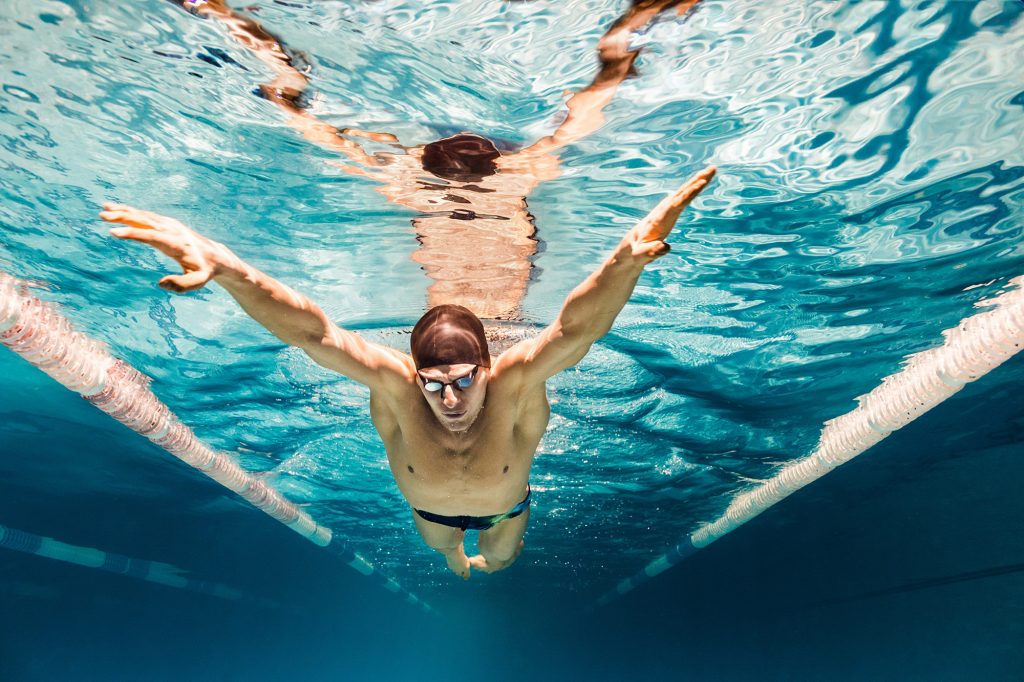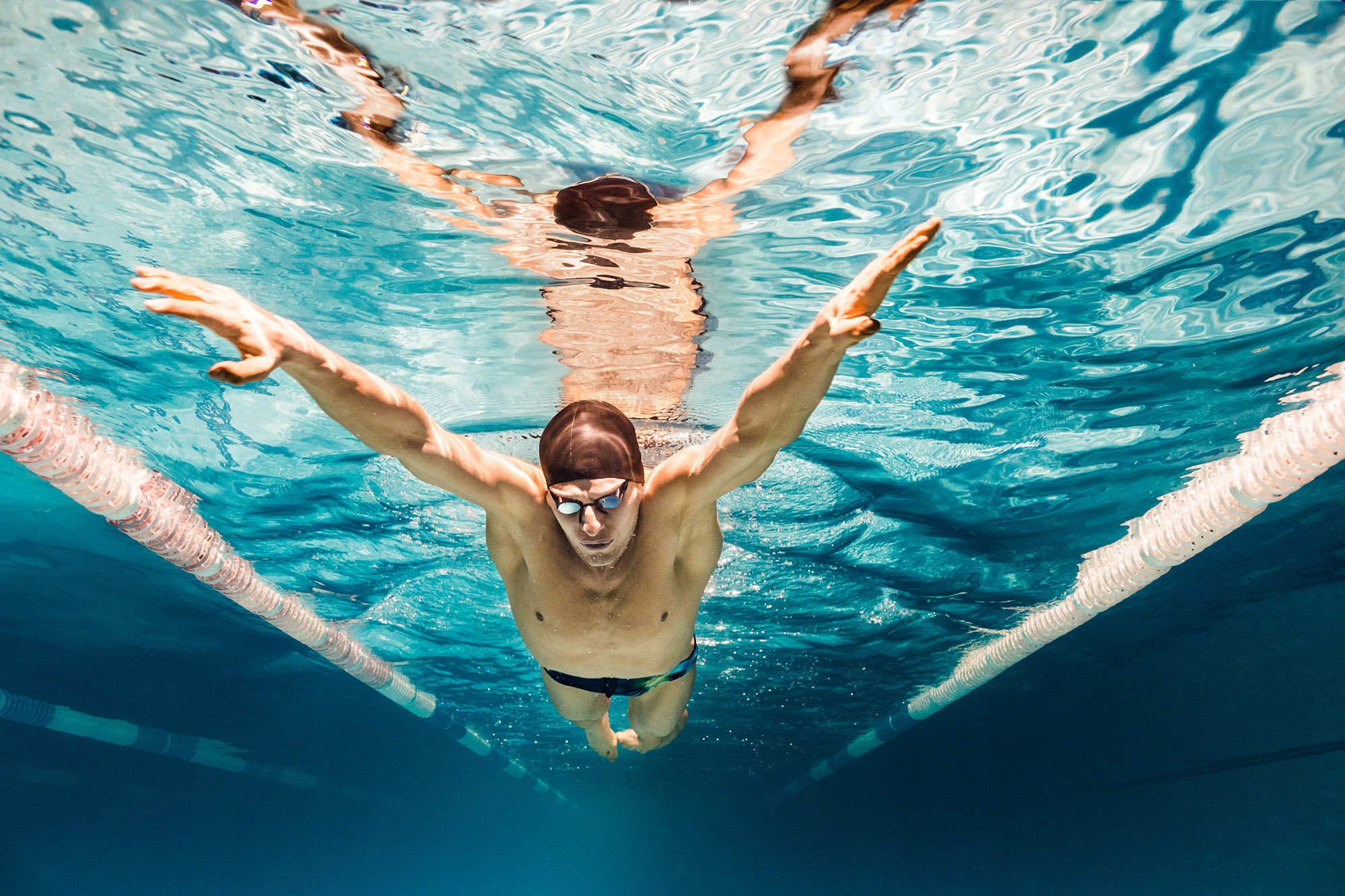Swimming goggles are a key item of equipment for any swimmer. They help protect the eyes from chlorine and other irritants in the pool, as well as provide clarity underwater and added protection against UV rays.
How to wear Swimming Goggles?
When wearing swimming goggles, it is important to make sure they fit correctly.
First, check that the straps are adjusted properly to provide a secure fit without being too tight.
The strap should be positioned behind your head and at the base of your skull with just enough tension so that you can move your head freely while still feeling supported by the straps.
Next, adjust the nose bridge according to your facial structure; most goggles feature adjustable nose bridges which can be tightened or loosened depending on comfort level.
Finally, try shaking your head and opening your eyes underwater to check that the seal is tight enough and no water is getting in.
It’s important to remember that swimming goggles are not one size fits all.
If possible, try on a few different pairs before making a purchase – this will ensure you find the best fit for your face shape and personal preferences.
Additionally, be sure to regularly clean and maintain your goggles to keep them in good condition. With effective care, you can enjoy clear vision during each swim session for many years.
Wearing Swimming Goggles
On top of wearing the right type of goggles for swimming activities, it’s also important to take regular breaks from wearing them.
Prolonged use of swimming goggles can cause pressure build-up around the eyes, so taking a break during your swim sessions can help prevent this.
Also, be sure to rinse with water immediately after swimming to remove any debris, chlorine or other contaminants that may have collected on the lenses.
With these simple tips, you can keep your goggles in optimal condition and enjoy clear vision each time you jump into the pool!
Finally, it’s important to remember to always follow safety guidelines when using swimming goggles to protect your eyes from potential damage.
Whether you’re just starting out or an experienced swimmer, use caution and common sense when selecting and wearing goggles for all aquatic activities. T
his will ensure that you get the maximum benefit from your swimming goggles without compromising your eye health.
How to keep Swimming Goggles from Fogging up?
To avoid fogging, you can use anti-fog treatments. Most swimming goggles come with a pre-fitted anti-fog coating on the lens which can be reactivated by applying water or saliva to the lens and then wiping it off before wearing them.
Alternatively, you can buy an anti-fog solution from a swim shop and apply it directly to the lenses before each swim session.
Another simple method for keeping your goggles free of fog is to rinse them in warm water prior to use.
This will help wash away any oils that may cause the lenses to fog up when exposed to pool chlorine or saltwater.
Finally, make sure your goggle straps are tight enough so that there is no air gap between the lenses and your face.
This will prevent moisture from entering the lenses and causing them to fog up. With these methods, you can keep your swimming goggles free of fog and make sure that every swim session is comfortable and clear-sighted.
Anti-fog for goggles which is always with you!
There is another pro tip to prevent swimming goggles from fogging up – use your saliva as an anti-fog solution.
Before every swim session, apply saliva to the swim goggles lenses and then let it dry out a bit, then rinse with a small amount of water, you can just put your goggles shortly into the swimming pool.
This is so old-school and easy, but it works as an effective anti-fog solution and should keep your vision clear all throughout your swimming session.
By taking these steps and following these tips, you can ensure that your swimming goggles remain free of fog and allow for maximum clarity during every swim session.
With no fogging distractions, you can focus on perfecting your form and making each lap count.

Why do swimming goggles fog up?
Swimming goggles fog up when the temperature difference between the air outside of the goggles and the warm, humid air inside of them is large.
When you swim, your breathing warms and moistens the inside of your goggles. At the same time, cold water on their exterior cools them.
This creates a stark contrast in temperatures, which causes an increase in humidity and makes it difficult to see clearly through your lenses.
Foggy swimming goggles are caused by condensation resulting from this temperature differential.
To prevent fogging, it’s important to create a seal around your eyes that prevents warm air from entering while also reducing how much cold water comes into contact with the outside surface of your goggle lenses.
Anti-fog treatments can also help, as they reduce the surface tension of your lenses, preventing water droplets from gathering and fogging up your vision.
How long do Swimming Goggles last?
Swimming goggles typically have a lifespan of three to six months. The longevity of your goggle can depend on if they are used regularly and how well they are cared for.
Regular wear and tear can cause the straps, seals, lenses, and frames to become brittle with age. To prolong the life of swimming goggles, it is important to rinse them in fresh water after every use and store them somewhere safe when not in use.
Additionally, replacing old straps periodically with new ones can help keep the goggles secure while swimming.
It is also essential to check for any cracks or tears in the frame or lens before each swim session – any visible damage should warrant replacement as this could lead to leaks during your swims.
Following these simple steps will ensure you get the most out of your swimming goggles.
Final Thoughts
It is also important to check the fit of your swimming goggles before each use.
Goggles that are too tight can lead to discomfort and leave marks on your face, while ones that are too loose may cause water leakage.
The best way to test if they fit properly is by placing them on your face without the strap and inhaling through your nose – this will create a seal between the lenses and your eyes.
Additionally, consider trying different styles or models of swimming goggles until you find a pair that fits perfectly for you.
With proper care and maintenance, you will be able to enjoy comfortable swims with reliable protection from your swimming goggles for many months ahead.


Leave a Reply